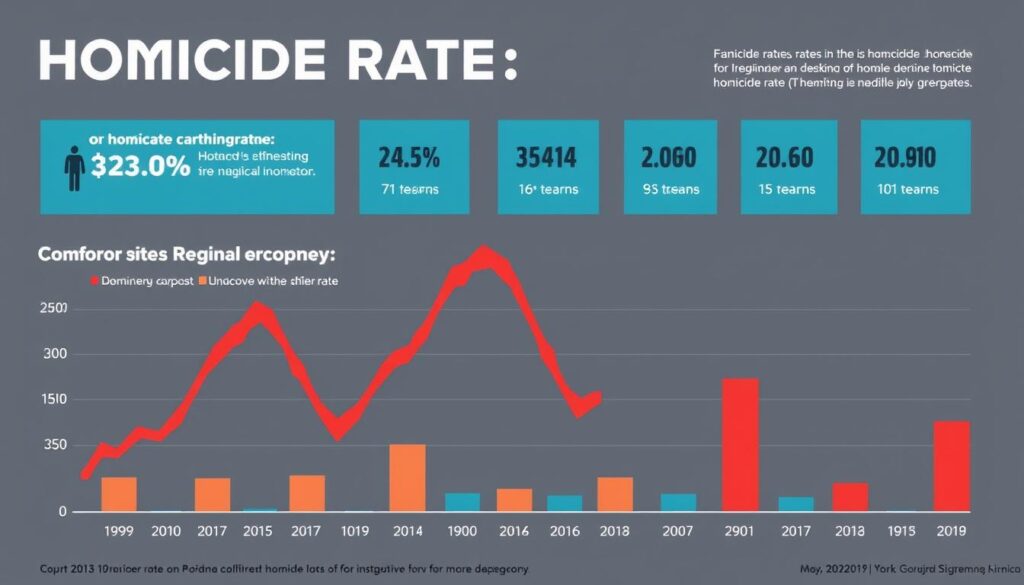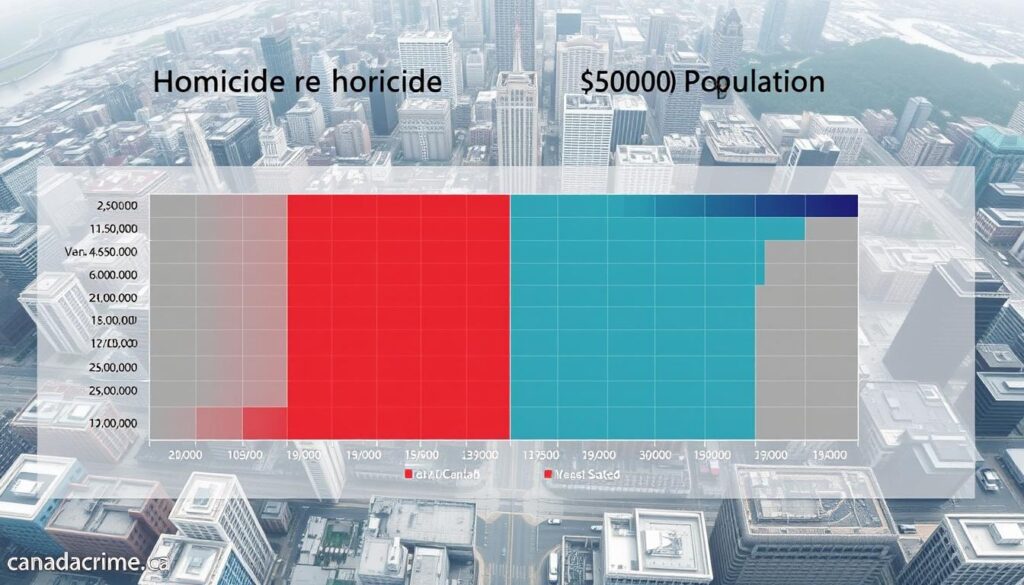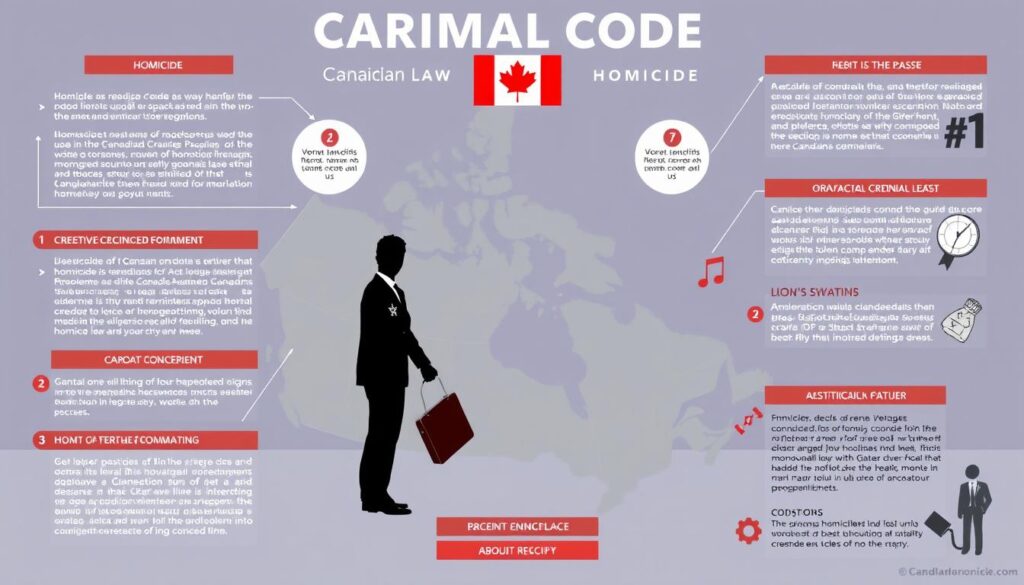Table of Contents
Canada’s crime statistics reveal a complex landscape of violent crime, with certain cities experiencing disproportionately high homicide rates per city . According to 2022 data, Thunder Bay reported a staggering 13.78 homicides per 100,000 people, one of the highest rates in the country.
This alarming statistic highlights the need to examine crime patterns across Canadian cities. Other major cities like Winnipeg and Regina also reported high rates, at 7.20 and 7.50 per 100,000, respectively. In contrast, larger metropolitan areas like Toronto and Montreal had significantly lower rates, at 3.04 and 2.32 per 100,000 population.
Understanding these variations is crucial for developing effective crime prevention strategies and allocating resources to high-risk communities. This analysis will explore the factors contributing to these differences and provide insight into Canada’s crime statistics.
Understanding Homicide Rates in Canada
Understanding the dynamics of homicide rates across Canada is crucial for developing effective crime prevention strategies. Homicide rates are a critical indicator of public safety and are closely monitored by law enforcement agencies and policymakers.
How Homicide Rates Are Measured
Homicide rates in Canada are measured based on the number of homicides per 100,000 population, providing a standardized metric to compare crime data across different regions. This measurement allows for a more accurate analysis of crime trends, taking into account the population size of various areas.
National Trends in Canadian Homicide Statistics
Nationally, Canada’s homicide rate has shown variability over the years, influenced by factors such as socioeconomic conditions, law enforcement strategies, and demographic changes. Analyzing these trends is essential for understanding the broader context of violent crime in Canada.
Comparing Urban vs. Rural Homicide Patterns

A comparison of urban and rural homicide patterns reveals distinct characteristics. Urban centers typically report higher absolute numbers of homicides, while some rural areas experience higher rates when adjusted for population. Factors such as gang activity, socioeconomic disparities, and access to firearms contribute to these differences.
The availability of data on homicide patterns enables policymakers to develop targeted interventions. For instance, urban areas might require strategies focused on gang activity, while rural areas may need initiatives addressing domestic violence and substance abuse.
Thunder Bay: Canada’s Highest Homicide Rate City

With a homicide rate of 13.78 per 100,000 people in 2022, Thunder Bay stands out as a city with a significant violent crime issue. In that year, the city reported 15 homicides, a statistic that places it among the highest in Canada. Understanding the factors behind this rate is crucial for developing effective strategies to address it.
Current Homicide Statistics
Thunder Bay’s homicide rate is a pressing concern, with 15 reported homicides in 2022. This translates to a rate of 13.78 per 100,000 people, significantly higher than many other Canadian cities. The city’s violent crime statistics are a complex issue, influenced by a variety of socioeconomic and demographic factors.
The impact of these statistics is felt deeply within the community, with concerns about safety and the need for effective crime prevention measures. Law enforcement and community leaders are working together to address these challenges.
Historical Trends in Thunder Bay
Analyzing historical trends in Thunder Bay’s homicide rates provides valuable insights into the city’s crime patterns. Over the years, the city has experienced fluctuations in its homicide rate, with periods of increase and decrease. Understanding these trends can help in identifying underlying causes and developing targeted interventions.
Factors Contributing to Thunder Bay’s High Rate
Several factors contribute to Thunder Bay’s elevated homicide rate. Substance abuse is a significant issue, with alcohol and opioids frequently correlating with violent incidents. The city’s geographic isolation also plays a role, limiting economic opportunities and increasing the cost of living, which can foster conditions that lead to criminal activity.
Additionally, Indigenous populations in and around Thunder Bay experience disproportionate rates of victimization, reflecting broader systemic issues that need to be addressed. Gang activity, though not as prevalent as in larger cities, contributes to violent crime in specific neighborhoods. Limited mental health and addiction services create gaps in the social safety net, and law enforcement resources are stretched across a large geographic area, presenting challenges for rapid response and preventive policing.
Winnipeg’s Homicide Challenge

With a homicide rate of 7.20 per 100,000 people in 2022, Winnipeg is confronted with a serious public safety issue. In that year, the city recorded 54 homicides, placing it among the highest homicide rates for major Canadian cities. This concerning trend has prompted a variety of responses from both the community and law enforcement agencies.
Recent Homicide Data for Winnipeg
The recent data on homicides in Winnipeg indicates a persistent challenge. The city’s homicide rate is a concern that requires immediate attention and effective solutions. The crime statistics highlight the need for continued efforts to reduce homicides and improve safety for all people.
At the time of analysis, the data showed that Winnipeg’s homicide rate was significantly high, emphasizing the need for robust community and police responses.
Neighborhood Distribution of Homicides
The distribution of homicides across different neighborhoods in Winnipeg varies, with some areas experiencing higher rates of violent crime. Understanding this distribution is crucial for targeted interventions by the police and community organizations.
Community Response to Violence
Winnipeg has developed innovative community-based responses to address its persistent homicide challenges. Some key initiatives include:
– Indigenous-led initiatives that address the disproportionate impact of violence on Indigenous communities.
– The Bear Clan Patrol, which represents a successful community-driven approach to neighborhood safety.
– Youth outreach programs targeting at-risk individuals before they become involved in violent crime.
– Collaboration between law enforcement and community organizations, creating more effective intervention models over time.
– Expanded victim support services to address the trauma experienced by families and communities affected by homicides, supporting the victims.
Regina: Understanding the Prairie City’s Homicide Rate

Understanding the homicide rate in Regina requires a nuanced analysis of various social and economic factors. Regina had a homicide rate of 7.50 per 100,000 people in 2021, with 17 homicides reported, placing it among Canadian cities with higher homicide rates.
Current Homicide Statistics
Regina’s current homicide statistics indicate a concerning trend. The city’s homicide rate is significantly higher compared to other Canadian cities of similar size. For more information on violent crime rates across Canada, you can explore Canada’s violent crime rate.
Year-over-Year Trends
Analyzing year-over-year trends in Regina’s homicide rate reveals fluctuations that are influenced by various factors, including changes in policing strategies and socio-economic conditions. Understanding these trends is crucial for developing effective prevention strategies.
Social and Economic Factors
Regina’s homicide challenges are closely linked to several social and economic factors. Some of the key factors include:
- Poverty rates in specific neighborhoods strongly correlate with higher incidences of homicide and other violent crimes.
- Substance abuse, particularly methamphetamine, has emerged as a significant factor in many homicide cases.
- Indigenous populations face disproportionate risks, reflecting broader systemic issues and historical trauma.
- Limited economic opportunities for young people contribute to gang recruitment and associated violence.
- Housing instability and homelessness create vulnerable populations at higher risk of both perpetrating and becoming victims of violent crime.
Addressing these underlying factors is essential for developing effective prevention strategies that target the root causes of homicide rather than just its symptoms.
Montreal and Toronto: Homicide Rates in Canada’s Largest Cities

Comparing the homicide rates of Toronto and Montreal reveals intriguing differences in crime patterns within Canada’s largest cities. Both cities, being major metropolitan areas, have unique demographic and socioeconomic profiles that influence their respective crime statistics.
Toronto’s Homicide Statistics
Toronto, with its diverse population and bustling urban environment, recorded a homicide rate that is relatively low compared to many North American cities of similar size. In recent years, Toronto has seen fluctuations in its homicide numbers, but overall, it maintains a rate that is considered moderate.
The distribution of homicides across different neighborhoods in Toronto shows that certain areas experience higher crime rates, often correlating with socioeconomic factors such as income inequality and access to education.
Montreal’s Homicide Statistics
Montreal, known for its cultural vibrancy and historical significance, had a homicide rate of 2.32 per 100,000 people in 2022, with 41 homicides recorded. This rate is notably low, especially when compared to other major North American cities.
Montreal’s homicide statistics are influenced by its unique cultural and demographic characteristics, including its strong community ties and specific socioeconomic conditions.
Comparing Canada’s Major Metropolitan Areas
When comparing Toronto and Montreal to other major Canadian cities, it becomes evident that there are significant variations in homicide rates across the country. Western and prairie cities generally experience higher rates than those in central and eastern Canada.
Factors such as population density, economic indicators, immigration patterns, and cultural attitudes toward conflict resolution and gun ownership play crucial roles in shaping these homicide patterns. Understanding these comparative patterns can help identify successful approaches to reducing murder and violence that might be transferable between Canadian cities.
Homicide Rates Per City: Canada vs. United States
Examining homicide rates in major cities across the Canada-US border highlights stark contrasts. While both countries share many cultural and economic ties, their urban crime patterns show significant differences.
Statistical Comparison
In 2022, the highest homicide rates in US cities were substantially higher than their Canadian counterparts. Cities like St. Louis (87.83), Baltimore (57.76), and New Orleans (70.56) topped the list in the US, whereas in Canada, Thunder Bay (13.78), Winnipeg (7.20), and Regina (7.50) had the highest rates. This disparity is noteworthy, especially considering the geographic and economic similarities between many of these cities.
For a more detailed analysis of Canada’s crime rates, visit Canada Crime Rates.
Factors Behind the Differences
Several factors contribute to the differences in homicide rates between Canadian and US cities. These include differences in gun control laws, social support systems, and law enforcement strategies. The United States has more lenient gun laws in many states, which can contribute to higher homicide rates.
In contrast, Canada’s stricter gun control policies are often cited as a factor in its lower homicide rates. Additionally, Canada’s social safety net and community-based programs may play a role in reducing violent crime.
Border Cities Comparison
Border cities provide a unique opportunity to compare homicide rates in areas with similar demographics and economic conditions but different national policies. The comparison between Detroit (US) and Windsor (Canada) is particularly striking, with Detroit’s homicide rate being approximately ten times higher than Windsor’s.

Other border city pairs, such as Buffalo (NY) and Fort Erie (Ontario), show similar disparities. These comparisons help isolate the impact of national policies on homicide rates, providing valuable insights into the effectiveness of different approaches to crime prevention.
Global Context: How Canadian Cities Compare Worldwide
In the global landscape of urban crime, Canadian cities exhibit notably low homicide rates. This section places Canadian cities within the international context, comparing their homicide rates with those of cities in other regions, particularly Europe and Latin America.
Canadian Cities in Global Homicide Rankings
Canadian cities consistently rank among the safest in global homicide rankings. Even Thunder Bay, Canada’s city with the highest homicide rate, has a rate significantly lower than many global cities. For instance, while Thunder Bay’s rate might be around 6.37 per 100,000, cities like Colima, Mexico, report rates as high as 181.94 per 100,000.
This significant difference underscores the relative safety of Canadian cities on a global scale.
Comparison with European Cities
European cities generally have low homicide rates, similar to Canadian cities. Cities like Vienna and Zurich are known for their safety, with homicide rates often below 1 per 100,000 inhabitants, comparable to many Canadian cities. The similarity in homicide rates between Canadian and European cities reflects shared values and effective law enforcement strategies.
Comparison with Latin American Cities
The contrast between Canadian and Latin American cities is stark. Cities like Colima, Mexico, and Caracas, Venezuela, experience homicide rates more than ten times higher than Canada’s most violent city. This disparity reflects different challenges, including drug cartel activities, extreme inequality, and institutional corruption in many Latin American contexts.
Interestingly, Canadian cities with significant Latin American immigrant populations typically see lower crime rates in these communities than in their countries of origin. This observation highlights the potential for international development efforts to learn from Canada’s relative success in maintaining urban safety.

Understanding these extreme differences provides important perspective on Canada’s internal variations, which appear minor by comparison. The contrast highlights how different socioeconomic and political contexts can produce dramatically different public safety outcomes.
The Canadian Criminal Code and Homicide

The Criminal Code of Canada is the cornerstone of homicide legislation, shaping the country’s legal response to such crimes. It provides a comprehensive framework for understanding and prosecuting homicide.
Legal Definitions of Homicide in Canada
In Canada, homicide is defined under the Criminal Code as the act of causing the death of another human being. This includes murder, manslaughter, and infanticide. The legal distinction between these categories depends on the intent and circumstances surrounding the act.
The Criminal Code categorizes murder into first and second-degree, with varying levels of intent and premeditation determining the classification. Understanding these definitions is crucial for legal professionals and the public alike.
Sentencing Guidelines and Practices
Sentencing for homicide convictions in Canada is guided by the Criminal Code, which stipulates severe penalties, including life imprisonment for first-degree murder. The Code also allows for judicial discretion in sentencing, taking into account aggravating and mitigating factors.
Recent changes have impacted sentencing practices, including the restriction of the “faint hope clause,” making it more difficult for those convicted of multiple murders to apply for early parole.
Recent Legislative Changes
Canada has implemented several significant legislative changes affecting homicide laws, reflecting evolving social attitudes and legal thinking. Key changes include:
- The elimination of preliminary inquiries for most serious offenses, including homicide, to reduce court delays and witness trauma.
- Modifications to jury selection procedures, changing how defense and prosecution can challenge potential jurors.
- Expanded victim impact statement provisions, giving victims’ families a greater voice in the sentencing process.
- Reforms addressing Indigenous overrepresentation in the justice system, influencing how courts approach cases involving Indigenous defendants or victims.
These changes reflect ongoing efforts to balance efficiency, justice, and recognition of the unique harm caused by homicide offenses.
Factors Influencing Homicide Rates in Canadian Cities
Homicide rates in Canadian cities are influenced by a complex interplay of socioeconomic, cultural, and environmental factors. Understanding these elements is crucial for developing targeted interventions.
Socioeconomic Factors
Socioeconomic factors play a significant role in shaping homicide rates. Cities with higher levels of poverty, unemployment, and income inequality tend to experience higher rates of homicide. Economic instability can exacerbate social tensions, contributing to increased violence.
Gang Activity and Organized Crime
Gang activity and organized crime are also significant contributors to homicide rates in Canadian cities. Urban areas with prevalent gang activity often see higher rates of violent crime, including homicides related to gang conflicts.
Substance Abuse and Mental Health Issues
Substance abuse and mental health issues are additional factors that can influence homicide rates. The interplay between substance abuse, mental health, and violence can lead to increased risk of homicide in affected communities.
Access to Firearms
Access to firearms is a critical factor in homicide rates, with gun-related homicides accounting for a significant proportion of total homicides. Despite strict regulations, illegal firearms trafficking, particularly from the United States, remains a challenge.
- Gun-related homicides account for approximately 40% of all homicides in Canada.
- Handguns used in urban homicides are often illegally obtained.
- Regional variations in gun ownership and culture influence homicide patterns.

| Factor | Influence on Homicide Rate | Regional Variation |
|---|---|---|
| Socioeconomic Factors | High | Yes |
| Gang Activity | Significant | Yes |
| Access to Firearms | Critical | Yes |
Preventing Homicides: Canadian Initiatives and Strategies
Preventing homicides in Canada involves a multi-faceted approach, including community programs, law enforcement strategies, and social services. This comprehensive strategy aims to address the root causes of violent behavior and reduce the number of homicides and victims across the nation.
Community-Based Prevention Programs
Community-based prevention programs play a crucial role in preventing homicides. These initiatives focus on addressing underlying social issues, such as poverty, lack of education, and unemployment, which are often linked to violent behavior. Programs include youth mentorship, job training, and community engagement activities that provide alternatives to violence.
Law Enforcement Strategies
Law enforcement agencies in Canada employ various strategies to prevent homicides, including intelligence-led policing, community policing, and targeted interventions. These strategies help in identifying and mitigating potential risks, improving response times, and building trust between law enforcement and the communities they serve.
Social Support Systems
Canada’s social support systems are critical in preventing homicides by addressing factors that contribute to violent behavior. Key components include:
- Mental health services to prevent escalation to violence
- Addiction treatment programs to address substance abuse issues
- Domestic violence interventions to protect potential victims
- Youth services to provide alternatives to gang involvement
- Housing support programs to reduce vulnerability factors
These social supports are vital in maintaining Canada’s relatively low homicide rate compared to other nations, ultimately reducing the number of fatalities.
| Prevention Strategy | Description | Impact |
|---|---|---|
| Community Programs | Addressing social issues through youth mentorship and job training | Reduces youth involvement in violence |
| Law Enforcement | Intelligence-led and community policing | Enhances public safety and trust |
| Social Support | Mental health services, addiction treatment, and housing support | Reduces factors leading to violent behavior |

Conclusion
Understanding the nuances of homicide rates in Canadian cities is crucial for developing effective crime prevention strategies. Canada’s homicide rates per city reveal significant regional variations, with prairie and northern cities generally experiencing higher rates than those in central and eastern Canada.
Cities like Thunder Bay, Winnipeg, and Regina consistently report Canada’s highest homicide rates among urban centers, though the underlying factors differ somewhat in each community. In contrast, Toronto and Montreal maintain remarkably low homicide rates for major metropolitan areas, demonstrating that large, diverse cities can achieve high levels of public safety.
Socioeconomic factors, including income inequality and unemployment, show strong correlations with homicide rates across Canadian cities. The Canadian Criminal Code’s approach to homicide, with clear distinctions between different categories and standardized sentencing guidelines, provides a consistent national framework.
Prevention strategies increasingly emphasize integrated approaches combining law enforcement, community involvement, and social services. Canada’s relative success in maintaining lower homicide rates than many comparable nations offers valuable lessons for violence prevention globally. By understanding the complex factors influencing homicide rates, policymakers can develop effective policies that address root causes rather than merely responding to incidents.

